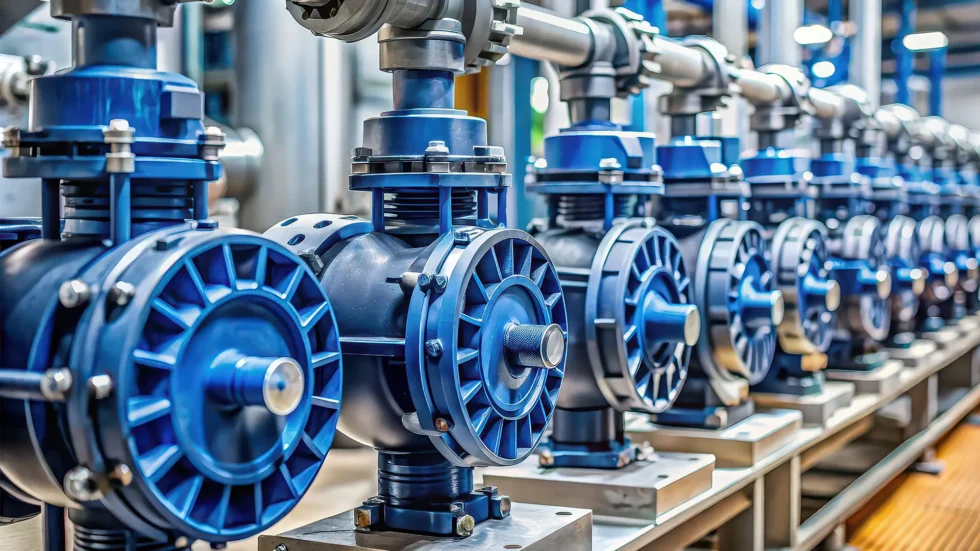Introduction
Waterway dredging is a critical process for maintaining navigable rivers, ports, and coastal areas. It ensures safe transportation routes, prevents flooding, and supports infrastructure development in areas prone to sediment buildup. At the crux of many dredging operations is a vital piece of equipment: mud pumps. These pumps play a crucial role in efficiently moving sediment-laden water, making them indispensable for waterway management projects. Mud pumps often work alongside sediment slurry pumps and other hydraulic dredging equipment to manage complex waterway conditions.
The Role of Mud Pumps in Dredging Operations
Mud pumps are designed to handle thick, abrasive fluids that contain sediment, silt, sand, or sludge. Unlike standard water pumps, mud pumps can transport heavy, viscous materials without clogging, maintaining a consistent flow during dredging activities. In waterway dredging, these pumps extract sediment from riverbeds, lakes, and coastal areas and transfer it to designated disposal or reclamation sites. Their ability to transport abrasive fluids makes them a key component in modern dredging operations.
By maintaining a steady flow of material, mud pumps reduce operational delays and increase overall dredging project efficiency. Their robust design allows continuous operation under high pressure, which is essential when dealing with varying sediment compositions and fluctuating water levels. Companies like EDDY Pump Corporation provide machinery engineered to handle the demanding conditions of waterway dredging, ensuring reliability and long-term performance. Sediment slurry pumps are often paired with mud pumps to improve the efficiency of transporting high-volume sediment.
Applications Across Different Waterway Projects
Mud pumps are not limited to one type of dredging task. They are versatile and can be adapted for multiple applications:
River Dredging: Maintaining navigable channels in rivers is essential for trade and transportation. Mud pumps, along with hydraulic dredging equipment, remove accumulated sediment that could otherwise block vessels and disrupt commerce.
Harbor Maintenance: Ports and harbors require periodic dredging to maintain adequate depth for ships. Mud pumps efficiently transport sediments to disposal sites or reclamation areas, keeping operations smooth. Sediment slurry pumps often assist in these high-volume projects.
Flood Control: In flood-prone regions, mud pumps help clear waterways of excess sediment and debris, increasing water flow capacity and reducing the risk of overflow during heavy rains. Their ability to transport abrasive fluids ensures that even thick slurries are handled effectively.
Land Reclamation and Coastal Projects: Mud pumps help transfer sediment for land reclamation or coastal restoration projects, supporting infrastructure development and shoreline reinforcement. Hydraulic dredging equipment complements mud pumps in these large-scale operations.
Through these applications, mud pumps contribute to the safety, functionality, and sustainability of waterway management initiatives.
Technical Advantages of Mud Pumps
One of the primary advantages of mud pumps is their ability to handle abrasive and dense materials without significant wear or loss of efficiency. The design typically includes hardened materials for the pump casing, impellers, and wear parts, enabling long operational life in challenging conditions.
EDDY Pump Corporation has developed a range of mud pumps designed for durability and adaptability. Their pumps can handle a wide range of sediment types and densities, making them suitable for projects ranging from small municipal waterways to large industrial dredging sites. The combination of mud pumps, sediment slurry pumps, and other hydraulic dredging equipment ensures reliable performance even in demanding environments. This flexibility allows operators to tackle projects that require high-efficiency abrasive fluid transport.
Operational Efficiency and Maintenance
Operational efficiency is a major consideration for any dredging project. Mud pumps contribute to faster completion times by enabling continuous sediment removal and transport. The ability to handle thick slurry reduces the need for multiple pumping systems, streamlining operations and lowering labor requirements.
Proper maintenance of mud pumps is essential to maintain performance. Regular inspection of wear components, seals, and bearings helps prevent breakdowns and extend pump life. Companies like EDDY Pump Corporation guide maintenance practices to ensure equipment reliability, helping dredging teams minimize downtime and avoid unexpected delays. The use of sediment slurry pumps alongside mud pumps often reduces strain on individual units, enhancing overall operational longevity.
Environmental Considerations
Modern dredging projects must balance efficiency with environmental responsibility. The use of mud pumps supports this balance by enabling precise sediment management. By transporting dredged material directly to disposal or reclamation sites, these pumps reduce the risk of sediment spreading into sensitive areas, protecting aquatic habitats and water quality.
Additionally, mud pumps enable targeted sediment removal in river maintenance and flood control operations. To minimize ecological impact, operators might focus on key areas where silt accumulation poses the greatest risk rather than dredging indiscriminately. Their connection with hydraulic dredging equipment and control over the transit of abrasive fluids guarantees that activities comply with environmental regulations.
Economic and Community Impact
Efficient dredging supported by mud pumps has tangible economic and social benefits. Restored waterways improve transportation efficiency, reduce flood risks, and enhance the productivity of ports and harbors. Communities near rivers and coastal zones benefit from safer infrastructure and improved access to trade and commerce.
Additionally, dredging projects provide jobs in logistics, maintenance, and operations. Mud pumps improve public safety and indirectly boost the local economy by enabling dependable river management. Effective projects that use sediment slurry pumps and high-performance pumps, such as those from EDDY Pump Corporation, reduce costs and resource consumption while optimizing results.
Challenges in Using Mud Pumps
Despite their advantages, mud pumps present certain challenges. Continuous operation with abrasive sediment can lead to wear over time, requiring careful monitoring and timely component replacement. Project managers must also consider variations in sediment type and water conditions when selecting pump models to avoid clogging or inefficiency.
Remote or hard-to-access dredging sites can complicate maintenance and logistics, underscoring the need for durable, versatile pumps. Advanced mud pumps designed for rugged environments and easy serviceability can help mitigate these challenges, ensuring projects continue without significant interruptions. Combined use with hydraulic dredging equipment often improves operational flexibility.
Future of Mud Pumps in Waterway Dredging
Mud pumps will continue to be essential to dredging operations as the demands on river management increase. In order to improve operational management and lessen their influence on the environment, future advancements are probably going to concentrate on automation, remote monitoring, and energy efficiency.
To improve pump performance and reliability, businesses such as EDDY Pump Corporation are making investments in innovation. Operators may make modifications to maintain optimal performance by tracking wear, pressure, and flow rates in real time with the integration of digital monitoring systems. This technology-driven method, when combined with sediment slurry pumps, facilitates effective and sustainable canal dredging in a variety of project contexts.
Conclusion
Mud pumps are a cornerstone of waterway dredging, enabling efficient sediment removal, flood control, and coastal restoration projects. Their ability to handle abrasive and dense materials, combined with precise operational control, makes them essential for modern waterway management. With high-quality equipment from companies such as EDDY Pump Corporation, dredging teams can operate reliably across varied environments, from inland rivers to coastal zones.








